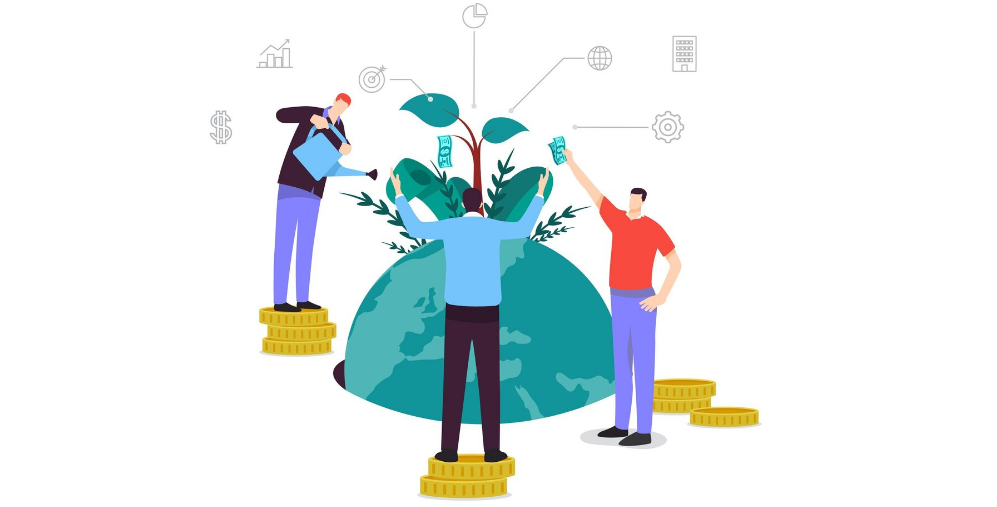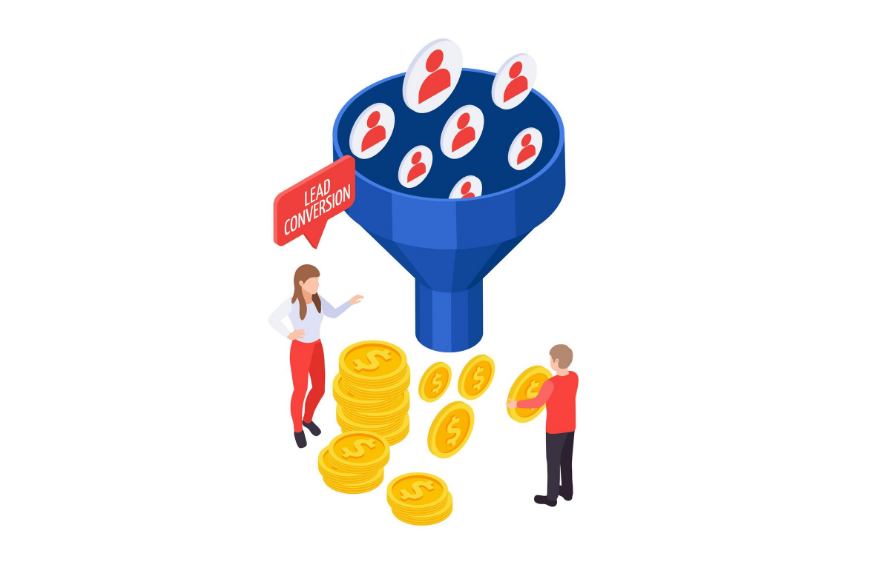Table of Contents
- What Does “Post-Cookie” Really Mean?
- Why Multichannel Outreach Is the Future of B2B
- Key Benefits of Multichannel B2B Outreach
- Channels That Matter Most in B2B Outreach
- Building a Multichannel B2B Outreach Strategy
- How to Stay Effective Without Third-Party Cookies
- Common Mistakes to Avoid
- Tools to Help You Master Multichannel Outreach
- What the Future Holds for B2B Outreach
- Final Thoughts
The way businesses connect with potential customers is changing fast. With third-party cookies being phased out, marketers are rethinking how they reach and engage B2B buyers. In this new environment, multichannel B2B outreach has become more important than ever.
This guide will help you understand what’s changing, why it matters, and how your business can thrive by mastering multichannel outreach in a post-cookie world.
What Does “Post-Cookie” Really Mean?
For years, marketers relied on third-party cookies to track users across websites. These cookies helped build detailed profiles of potential buyers and supported targeted advertising across platforms.
Now, with privacy regulations like GDPR and CCPA and decisions by companies like Google and Apple, these cookies are going away. As a result, marketers need new strategies to reach B2B audiences without relying on personal data collected from outside sources.
Why Multichannel Outreach Is the Future of B2B
In the post-cookie era, a single outreach channel is no longer enough. Buyers are spread across platforms, from email and LinkedIn to webinars and podcasts. They also expect personalized, timely interactions.
That’s where multichannel outreach comes in. Instead of relying on just one method, successful marketers create a unified approach across multiple platforms. This improves visibility, builds trust, and increases the chance of reaching decision-makers at the right moment.
Key Benefits of Multichannel B2B Outreach
Reaches Buyers Where They Are
Your potential customers don’t stick to one channel. Some prefer email, others live on LinkedIn, and some rely on industry blogs. A multichannel strategy ensures you meet them where they already spend time.
Increases Engagement and Trust
Consistent messaging across different platforms builds familiarity. Seeing your brand in multiple places—email, social media, webinars—helps build trust over time.
Improves Conversion Rates
When done right, multichannel outreach provides multiple touchpoints. This keeps your business top of mind and improves the chances of converting a lead into a customer.
Channels That Matter Most in B2B Outreach
Let’s break down the most effective outreach channels you should consider:
Email Marketing
Email remains a powerful tool for B2B outreach. It’s direct, measurable, and cost-effective. Segment your lists, personalize your messages, and provide value to improve open and response rates.
LinkedIn Outreach
LinkedIn is the top social platform for B2B. Connect with decision-makers, share content, and use personalized messages to build relationships. Tools like LinkedIn Sales Navigator make this process more efficient.
Content Marketing
Content is the foundation of any outreach strategy. Blogs, whitepapers, and case studies help educate potential buyers and show that your business understands their challenges.
Webinars and Virtual Events
These are great for building credibility. Invite prospects to join a live session where they can learn something valuable. It’s also a chance to answer questions and engage in real time.
Paid Ads (With First-Party Data)
Even though third-party cookies are fading out, you can still run effective ads using your own data. Upload email lists to platforms like LinkedIn or Google for targeting based on direct relationships.
Chatbots and Conversational Marketing
Chatbots on your website can help start conversations. When used right, they can guide visitors, answer questions, and direct them to sales reps.
SMS and Messaging Apps
These are growing in popularity, especially for follow-ups or appointment reminders. Use them carefully and only with permission.

Building a Multichannel B2B Outreach Strategy
Now that you know which channels to use, here’s how to build a strategy that works.
Step 1: Define Your Audience
Start by clearly defining your target audience. Who are your decision-makers? What industries are they in? What are their pain points?
Create buyer personas to guide your messaging across each channel.
Step 2: Map the Customer Journey
Understand the stages your prospects go through before becoming a customer:
- Awareness
- Consideration
- Decision
Each stage needs different content and outreach tactics. For example, educational content works well in the awareness stage, while product demos and case studies help during the decision stage.
Step 3: Align Channels to the Journey
Not every channel is useful at every stage. Use this guide:
- Awareness: Social media, blogs, webinars
- Consideration: Email, case studies, product pages
- Decision: Direct outreach, demos, reviews
Use tools like CRM and marketing automation platforms to track engagement and coordinate outreach.
Step 4: Personalize Your Messaging
Generic messages don’t work anymore. Personalize your emails and LinkedIn messages. Reference a recent blog post the lead shared or a pain point they’re facing. Small details make a big difference.
Step 5: Use First-Party Data Wisely
With cookies gone, your own data becomes even more valuable. Use data from your CRM, website analytics, and email campaigns to better understand your leads and customize outreach.
Step 6: Test and Optimize
No strategy is perfect from the start. Track your metrics—open rates, click-through rates, responses, demo requests—and adjust accordingly. Use A/B testing to refine subject lines, call-to-actions, and send times.
How to Stay Effective Without Third-Party Cookies
Here are ways to stay strong even as cookies disappear:
Collect More First-Party Data
Encourage signups, downloads, and webinar registrations. Use these interactions to gather data you can use to personalize outreach.
Improve Lead Scoring
Use behavioral data like email engagement, website visits, and content downloads to identify high-potential leads.
Invest in Account-Based Marketing (ABM)
ABM allows you to focus on specific accounts and personalize content across channels. It’s a strong fit for multichannel outreach in the B2B space.
Focus on Content Quality
With fewer ways to track users, great content becomes even more important. Create helpful, relevant, and timely resources that attract and retain attention.
Common Mistakes to Avoid
Spamming Every Channel
Multichannel doesn’t mean bombarding prospects from all sides. Timing and frequency matter. Too much contact can drive them away.
Ignoring Mobile Optimization
Many buyers check emails and social media on their phones. Make sure your emails, landing pages, and content are mobile-friendly.
Not Aligning Sales and Marketing
Your outreach strategy won’t work unless your teams are aligned. Marketing brings in the leads, and sales follows up. They should be working together, not in silos.
Using the Same Message Everywhere
Each platform has its own tone. What works in an email may not work on LinkedIn. Tailor your message to fit the format and audience expectations.
Tools to Help You Master Multichannel Outreach
- HubSpot – CRM, email marketing, and automation
- Outreach.io – Sales engagement platform
- LinkedIn Sales Navigator – Prospecting tool for LinkedIn
- Hootsuite or Buffer – Social media scheduling
- Google Analytics – Monitor site activity and content performance
- ZoomInfo – Contact data and account insights
These tools help you manage campaigns, track performance, and scale your efforts.
What the Future Holds for B2B Outreach
As buyer behavior evolves and privacy becomes a priority, the most successful B2B teams will be the ones who can adapt quickly. Outreach will become more personalized, data-driven, and relationship-focused.
Expect to see more businesses investing in content creation, deeper integration between sales and marketing tools, and stronger focus on trust and transparency.
Final Thoughts
The post-cookie world may seem challenging, but it opens new doors for authentic connection. By mastering multichannel B2B outreach, your business can build real relationships, stay top-of-mind, and drive long-term growth.
Focus on quality, personalization, and consistency across your channels. Your audience is still out there—and now, you have smarter ways to reach them.






Leave a Reply